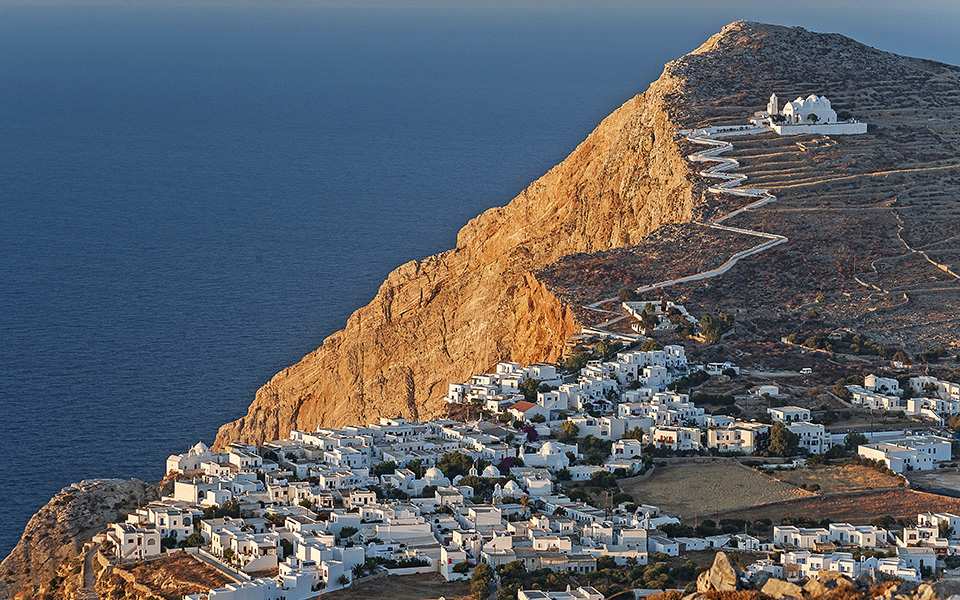1. Folegandros: The ‘little sister’ of the archipelagos
Folegandros began to flourish as a tourist destination in the 1980s and ’90s, when visitors seeking more serene destinations away from bustling hotspots like Mykonos and Santorini began to discover its quiet charm and wild beauty.
There are three main settlements: Karavostasi (the main port) and the villages of Ano Meria and Chora. In the latter, public squares where children can run free without fear of cars, picturesque streets, tasteful cafés and tables loaded with goods (from homemade “matsata” fettuccine to orange pies and almond sweets) make it one of the most attractive towns in the Cyclades.
The most characteristic district of Chora is the medieval Kastro district (‘meaning castle’) made up of the white-washed houses with colorful doors and windows that are typical of Cycladic architecture. Just above is the church of the Virgin Mary with its silver Byzantine icon.
Ano Meria is completely different; a distinctly agricultural village made up of traditional farmhouses with threshing floors, olive presses and cisterns.
It’s also worth hiking to the Aspropounta lighthouse (built in 1919) where you can listen to the murmuring wind as you gaze out over the wind-whipped sea.
INFO | Folegandros is a Cycladic island, located between Milos and Sikinos.
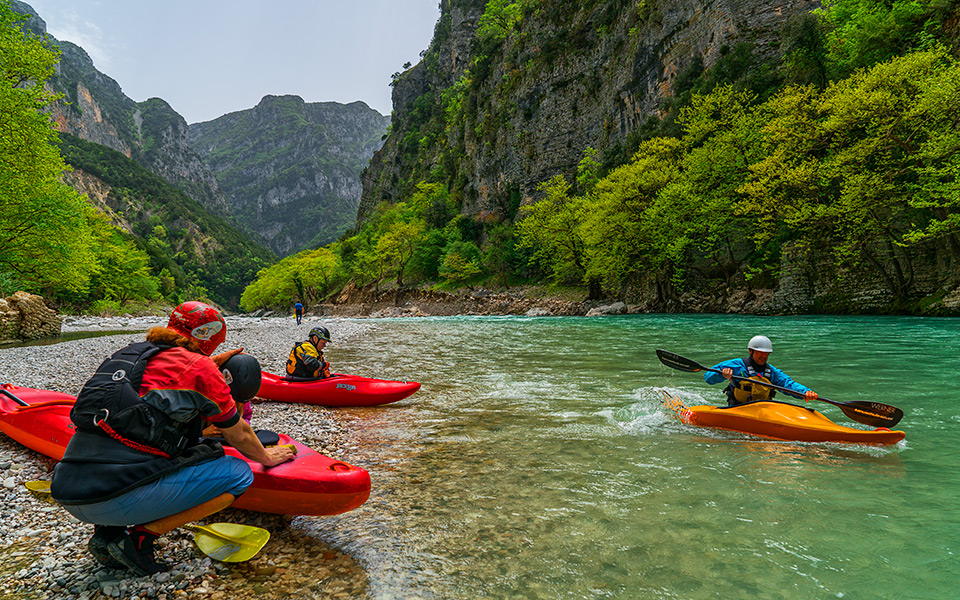
© Perikles Merakos
2. Tzoumerka: A journey to hidden villages
The Tzoumerka mountains, with their rivers, high peaks and traditional stone bridges, are not a typical summer tourist destination. This region is for nature-lovers and fans of hiking, rafting, kayaking, mountain biking, gorge-trekking and archery, to name a few.
Aside from numerous activities, the area also offers explorers a wealth of opportunities to explore traditional villages (there are a total of 47). Among the most popular are Syrako with its stone-built houses and slate roofs, tiny Ampelohori with its lovely main square, Kalarytes with its old cafe (passed down through 5 generations), and Melissourgoi with its mountain refuge.
Keep in mind that great and hearty food is a prominent feature of the Tzoumerka region. From the many local offerings, try manouri cheese with fresh warm bread, beef steaks, wild boar stew and any of a slew of savory pies.
INFO| The Tzoumerka mountains are in western Greece (forming the border between the regions of Epirus and Thessaly).
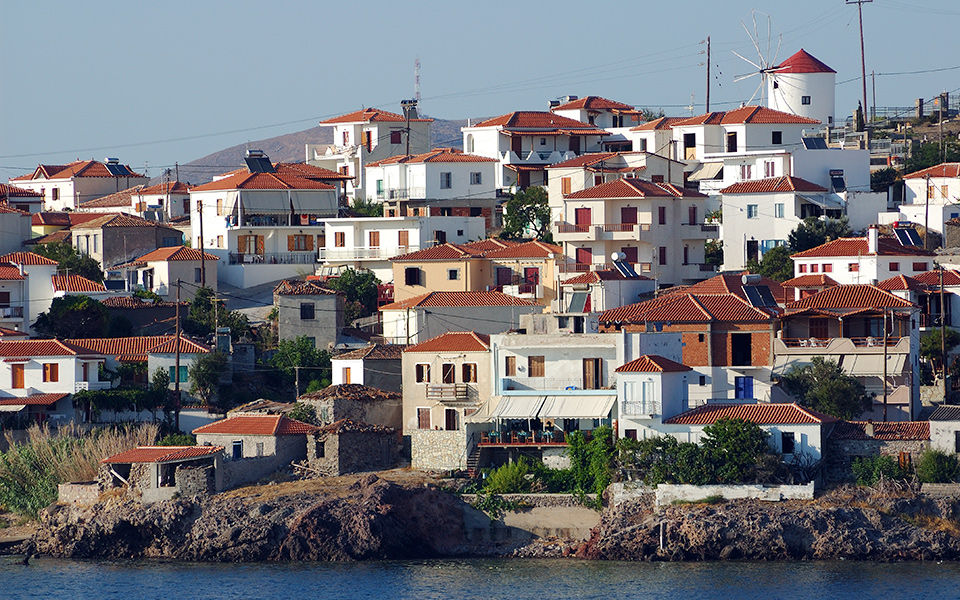
© Kostas Atsametakis
3. Sigri, Lesvos: In the footsteps of Albert Camus
On your next trip to Lesvos (aka Mytilene), the third-largest island in Greece with a size of 1,636 square kilometers, one must-visit is the quiet fishing village of Sigri.
This applies especially for avid readers and fans of The Stranger, by Nobel Prize-winning Franco-Algerian author Albert Camus, who once visited the place. He was so moved by it that he said he wanted to live on “the bare rock of the picturesque fishing village.”
A visit to Sigri should include a tour of Sigri Castle; built in the 18th century by the Grand Admiral of the Ottoman fleet Suleiman Pasha, it became a fort and base of operations for the Entente during World War I. The Natural History Museum of the Lesvos Petrified Forest also provides an impressive look into Lesvos’s pre-historic past when a tropical jungle filled with strange beasts covered the land.
After your tour, take a dip in the calm waters at sunset and finish up your day with a meal of fresh fish at one of the local tavernas.
INFO | Sigri is at the western edge of Lesvos, opposite the islet of Nisiopi.
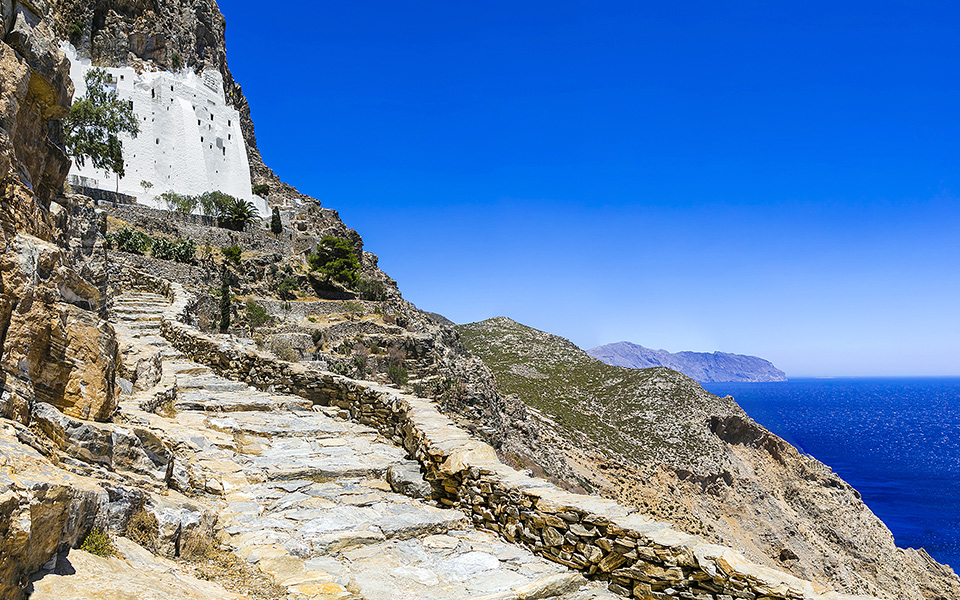
© Clairy Moustafellou
4. Amorgos: Trekking the Aegean
For most, Amorgos is associated with two things: with the dazzling white monastery of Hozoviotissa clinging to the cliffside and the film The Big Blue by Luc Besson, part of which was filmed on the island.
Amorgos is also dream come true for hikers. There are numerous charted trails that enable you to see the villages of Aigiali, Katapola, Aghios Georgios and Valsamitis; the old windmills at Lagkada; the monument of Evangelistria; the freshwater spring at Nera and many other lovely places.
Before setting off, ask the local authorities or tourist agencies about the difficulty and condition of the trails and be sure to follow the rules of safe trekking: carry water, wear suitable shoes, comfortable clothing and bring a walking stick for an enjoyable excursion through Amorgos’s rugged landscape.
INFO | Amorgos is the eastern-most Cycladic island, situated near Keros and Koufonisia
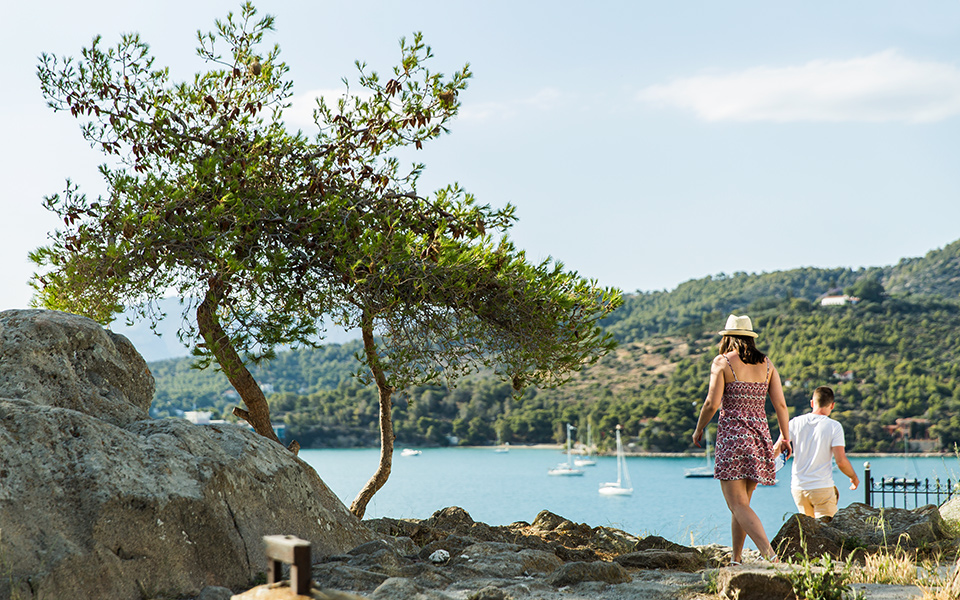
© Dimitris Vlaikos
5. Poros: Low-profile in the Saronic Gulf
From Athens get in your car and head for the eastern Peloponnese and the coast of Galatas, where you can board the car ferry (lovingly called a “slipper”) to Poros, a 10-minute boat ride.
Poros is essentially two islands (Sfairia and Kalavria) separated by a narrow channel. It an island is worth visiting particularly for a relaxed vacation on a lower budget.
You can walk or cycle through Chora, enjoy the view from the hill of Sfairia, where the historical clock (1927) is situated, go fishing off Monastiri beach, swim at the abandoned but charming Russian Naval Base (a reminder of the presence of the Russians on the island who owned the facility until 1900) and try some lemon pie and lemon preserves made with the fruit from the Lemon Forest in nearby Galatas.
INFO | Poros is one of the Saronic Gulf islands
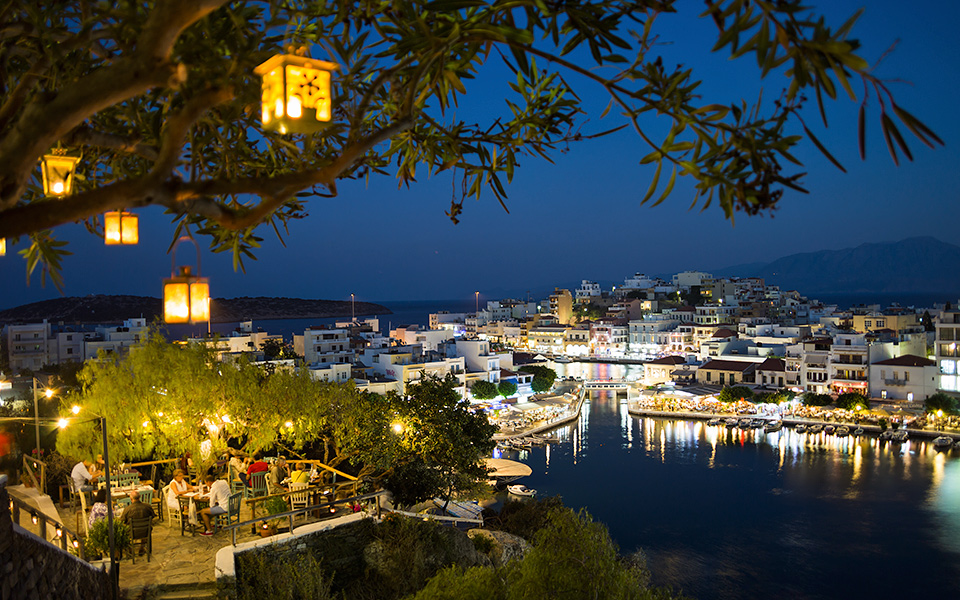
© Shutterstock
6. Lasithi: Cretan Eden
Lasithi’s diversity is heaven for the more restless tourist who enjoys a frequent change of scenery. Start at Aghios Nikolaos, a town built around a small lake with busy tourist traffic and all the associated amenities (souvenir shops, restaurants and nearby beaches for swimming).
Continue with a tour of the plateau, famous for its agricultural products (great quantities of fruits and vegetables available at farmers’ markets are produced here).
A major draw for visitors from all over the world is the Dictaean Cave, where, according to myth, Zeus was born and raised, hidden from his father Cronus.
When it’s time for a swim, you can either take the boat for Chrysi, an exotic uninhabited island in the Libyan Sea with azure waters, white sands and old cedar trees, or head for Vai, at the eastern edge of Lasithi, for a dip near a unique forest of Cretan date palms (Phoenix theophrastii).
INFO | Lasithi is the eastern-most prefecture of Crete, bordering to the west on the Prefecture of Irakleio
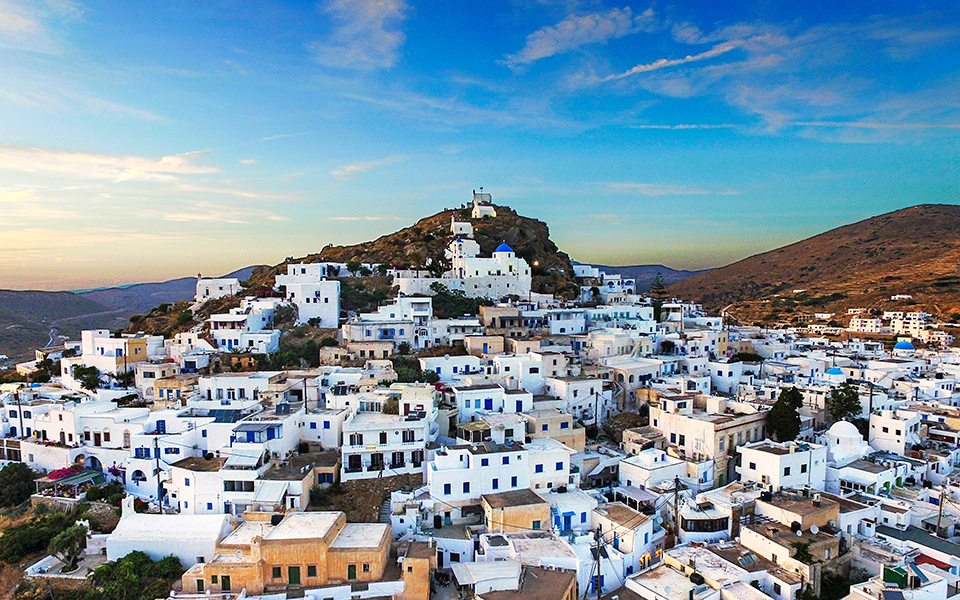
© Sakis Gioumpasis
7. Ios: Party in the Cyclades
For those seeking lively summer fun, Ios is undoubtedly the place to be. Commence with bar-hopping at the Ios Club, the historic sunset bar which opened first opened its doors in 1967. Watch the sunset and try signature cocktails based on Greek herbs (like the Ithaca-Odyssey, with aged tequila, lavender liqueur and fresh lime juice). Then wander round the narrow streets of Chora where you’ll find numerous options for drinks and dancing ’til dawn.
Ios, of course, is more than just its parties. Choose from one of the spectacular beaches (Mylopotas, Psathi, Koumpara, Maganari, Aghia Theodoti) for a swim and sunbathing. Alternatively an even quieter corner is Paliokastro, a dilapidated castle reached via a cobblestone path that offers great views of the Aegean Sea and neighboring islands.
IINFO | Ios is a Cycladic island located between Sikinos, Irakleia and Santorini
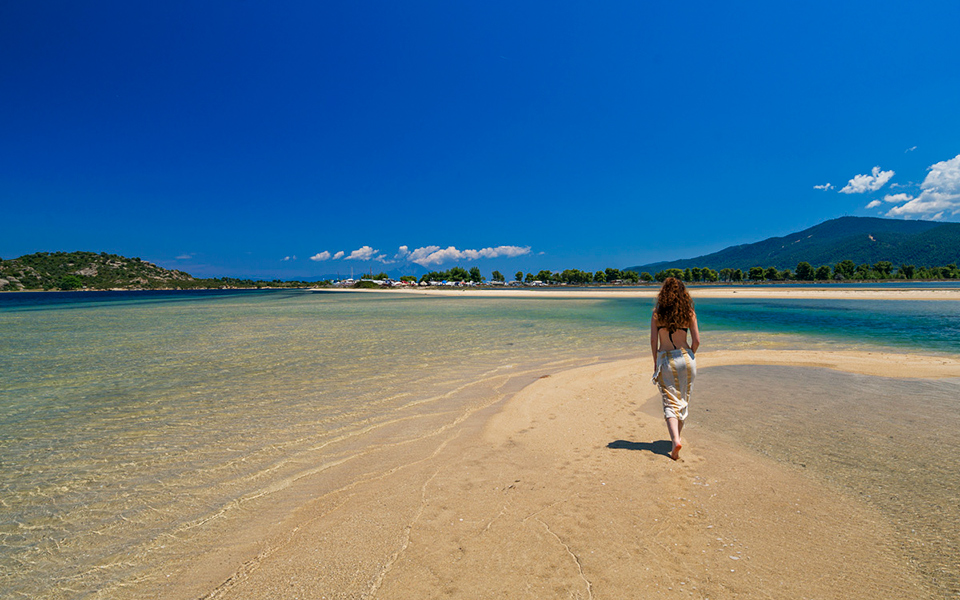
© Perikles Merakos
8. Sithonia: Outstanding beaches and traditional villages
The Sithonia peninsula is an excellent choice if you are in Northern Greece and would like to split your time between exquisite beaches and idyllic villages.
Start with Kavourotripes (‘crab holes’), the best-known beach in the area with flat, sand-colored rocks and a thick pine forest. Make sure to also visit the small islands accessible by boat from the town of Vourvourou, such as Diaporos.
For a distinctive Sithonian village that has retained its traditional Macedonian architectural style, head for Parthenonas. Abandoned in the 1960s and ’70s, it later became a listed settlement and the houses were restored. In the same vein another option is Palia Nikiti, a 700-year-old village set in a lush area with a recently-opened folklore museum.
Info: Sithonia is the middle leg of Halkidiki, between Kassandra and Mount Athos.
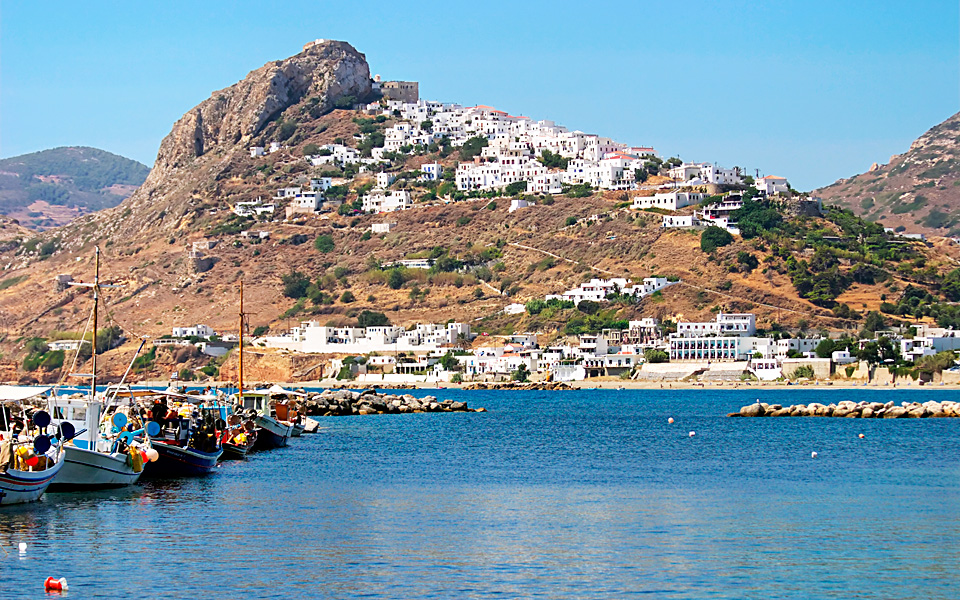
© Shutterstock
9. Skyros: The serene Sporades island
For a quiet vacation opt for Skyros. Officially part of the Sporades, it is quite unlike the other islands in this group such as cosmopolitan Skiathos.
Take a stroll around Chora, the main town, with its white-washed houses and yards filled with flowers, and visit the Faltaits Museum, a historical and folklore museum with numerous exhibits of ceramics, wood carvings, woven kilims and table coverings.
Nature lovers can also explore Skyros hiking through the forests of oak and maple. Visit the Skyros Life site to learn more about the eight recommended hiking trails.
Children (and adults) will also enjoy getting a closer look at the Skyrian ponies, a rare native breed of small horses with large bellies and tufted hooves. These animals were found all over Greece in antiquity, but now only survive in Skyros (for information, see the Mouries Farm page.)
INFO | Skyros is the southern-most and largest island of the Northern Sporades.
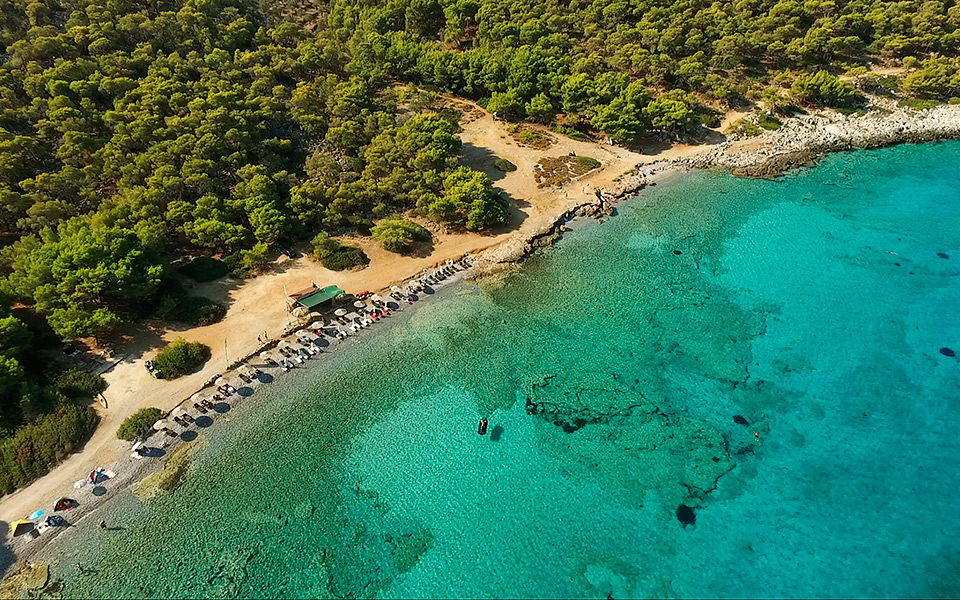
© Shutterstock
10. Agistri: Close and unspoiled
A short hop away from Athens, Agistri is a great pick if you don’t want to travel too far to get to a little piece of heaven. A ferry-boat ride of just 2 hours from Piraeus will bring you to this pristine island barely touched by tourism and covered by lentisk trees and pines that grow down to the shoreline.
The waters are cool, clean and emerald green. One of the best known beaches on the island is Dragonera, which can be reached from the port at Skala with your own transport (car, motorbike or mountain bike), by bus or on foot (the distance between Skala and Dragonera is 4.2km and is about an hour’s walk).
INFO | Agistri is the smallest of the Saronic Gulf islands. It lies between Aegina and Epidaurus

